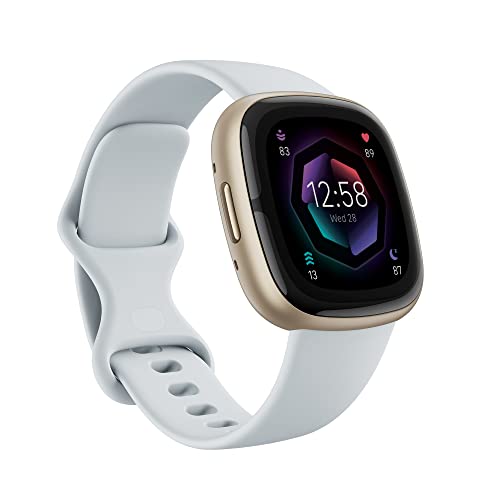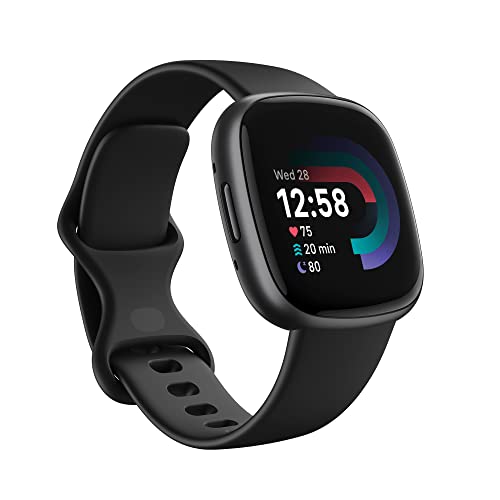Fitbit Sense 2 vs Versa 4: What's the difference between these two smartwatches?
Deciding between the Fitbit Sense 2 vs Versa 4? These two devices look very similar, so here, Health Editor Grace Walsh reveals all you need to know
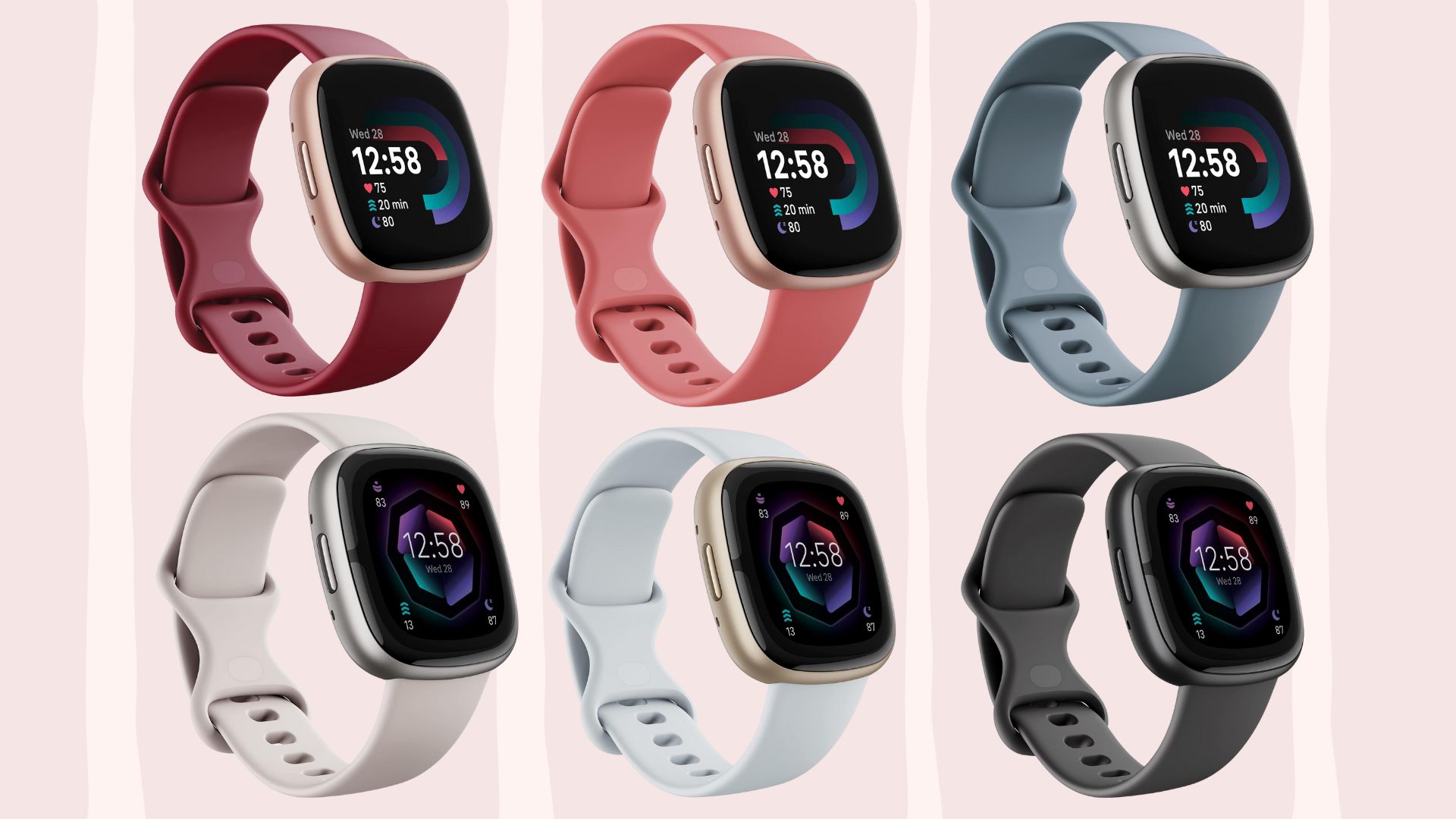

The Fitbit Sense 2 and Versa 4 are the latest smartwatches from Fitbit. They look fairly similar - but work quite differently - so you might be stuck choosing between them if you want to upgrade your fitness tracker in 2025.
As a health editor at woman&home and a fan of Fitbit's fitness trackers for the last few years, I've tried and tested every device currently on sale - all of the best Fitbits - across weeks and months and in many different workout types. They sit among the best fitness trackers overall, finding the perfect sweet spot between premium lifestyle features and excellent health monitoring.
The Fitbit Sense 2 and Versa 4 are premium tracker-smartwatch hybrid devices designed to help you monitor your overall health and wellbeing while offering recovery and lifestyle features to help you out day-to-day. While they are very similar in many ways, there are some key differences worth noting.
Fitbit Sense 2 vs Versa 4
Specifications
| Header Cell - Column 0 | Fitbit Sense 2 | Fitbit Versa 4 |
|---|---|---|
| Size | 1.5" l x 1.5" w x 0.45" h | 1.5" l x 1.5" w x 0.45" h |
| Display size | 1.58 inches | 1.58 inches |
| Full colour display | Yes | Yes |
| Battery life | 6+ days | 6+ days |
| Charging time | 2 hours | 2 hours |
| Waterproof | Water resistant up to 50m | Water resistant up to 50m |
| Key features | Built-in GPS, compass, blood oxygen levels, temperature sensing, ECG, barometer, gyroscope | Built-in GPS, compass, blood oxygen levels, barometer, gyroscope |
| Colours available | Grey, white, blue mist | Black, blue, pink, red |
| Extras | Fitbit Premium 6 month free trial | Fitbit Premium 6 month free trial |
| RRP | £219.99 | £179.99 |
Fitbit Sense 2 vs Versa 4: An overview
The Fitbit Sense 2 and Versa 4 are very similar - from design to features, so you can't go wrong with either device. The core difference, however, is in the focus. The Sense 2 is more of an overall health and wellness tracker focusing on holistic wellbeing through improved sleep and limited stress, as well as more exercise and daily movement. The Versa 4 has many of the same relaxation tools with sleep and stress insights but it prioritises fitness, with the workout modes available in one easy swipe.
The Fitbit Versa 4 is cheaper than the Sense 2 by as much as £100 in some cases, so it's certainly worth weighing up the pros and cons of both before making a decision.
Design
As you may have noticed, these two smartwatches are almost identical. When put side-by-side, it's tough to tell them apart. The Fitbit Sense 2 and Fitbit Versa 4 have a square face with a metallic casing measuring 40.5mm (Sense 2) and 40.4mm (Versa 4) around a full-colour, bright AMOLED display.
On the side of both watches is a tactile button used alongside the watch's touchscreens to bring the screen to life, navigate the features, turn it off when needed. In reviewing these watches, I did initially find that the Versa 4's screen sensors are slightly more sensitive than the Sense 2 as it was easier to flick the screen on/off with a flick of the wrist. This is useful feature during the day but luckily, you can turn it on and off. It's not so useful at night when the display accidentally flicks on, waking you (me) up. Both devices, much like every other type of Fitbit, offer a water resistance of up to 50m.
Sign up for the woman&home newsletter
Sign up to our free daily email for the latest royal and entertainment news, interesting opinion, expert advice on styling and beauty trends, and no-nonsense guides to the health and wellness questions you want answered.
The home screens are slightly different too. The Versa 4 displays heart rate, activity minutes, and sleep time, while the Sense 2 brings up heart rate, calorie burn, sleep time, and activity minutes. Otherwise, the available colourways are the only key design difference. Both have a metallic casing and interchangeable silicone 'Infinity' wristbands, but Fitbit Sense 2 offers muted palettes in black, grey, and blue mist, while the Versa 4 brings a higher-energy palette in a brighter blue, pink, or red.
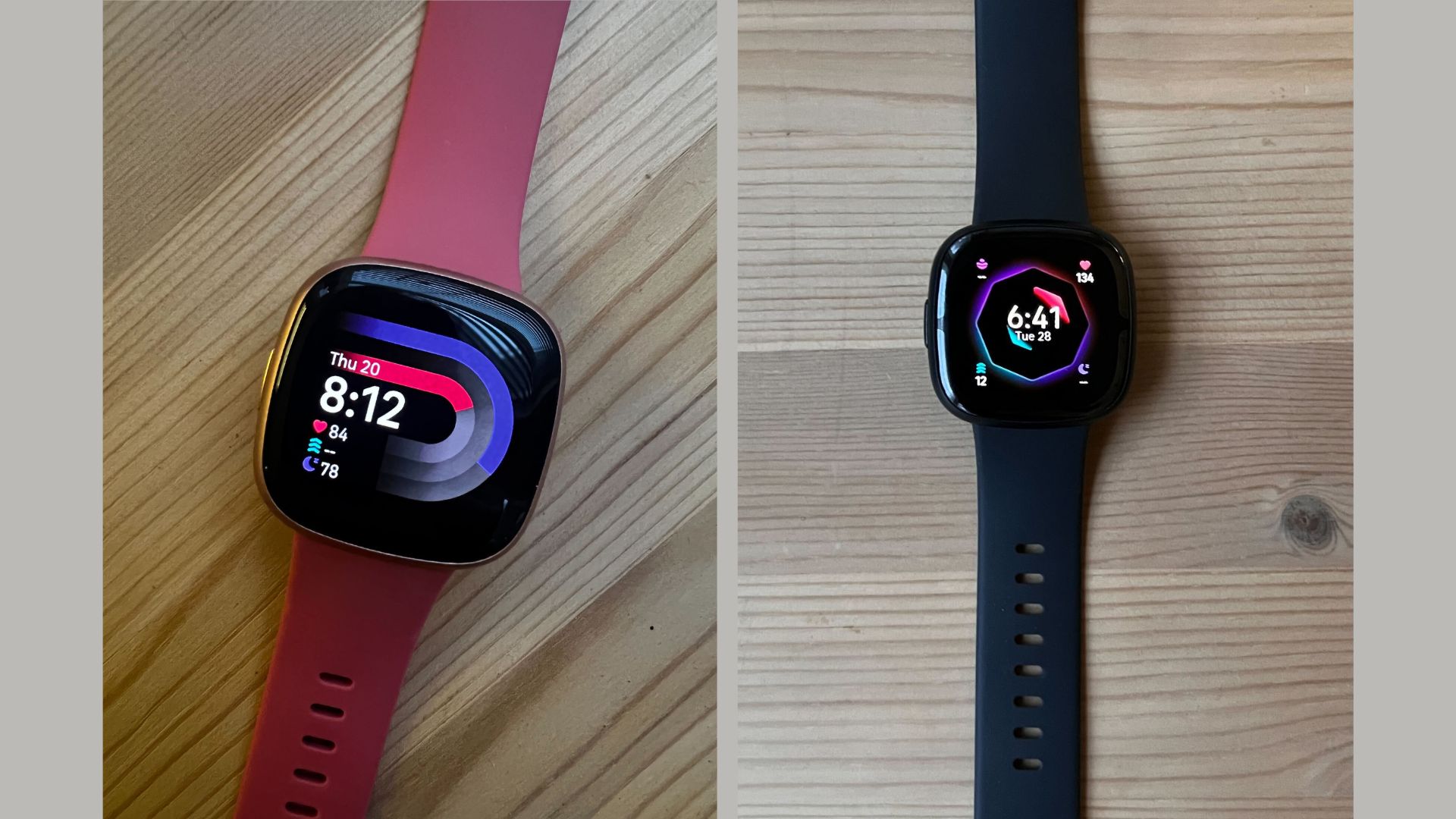
The Versa 4 (left) and Sense 2 (right) look almost identical.
Features on the Fitbit Sense 2 vs Versa 4
The Fitbit Sense 2 and Fitbit Versa 4 offer great features for those new to smartwatches or looking for something simple. This isn't the newest Apple Watch - you're not going to find state-of-the-art phone integration here, but I've always found the features on offer more than enough.
Perhaps the best way of looking at it is the Fitbit Versa 4 is a paired-back, more basic version of the Sense 2.
Both watches have built-in GPS, meaning you can leave your phone at home and track your activity via the watch alone. Google now owns Fitbit, bringing it into line with their fitness tracker offering. There is support for Google Wallet, Google Maps, and Google Assistant built into all new Fitbit devices to match the brand's range, like the Google Pixel Watch 3. This means you can use your watch for turn-by-turn navigation on your wrist and pay for items on your watch anywhere that accepts Google Pay. This wasn't a feature upon launch of these products but in 2025, I'm pleased to say it's available.
There are more than 40 exercise modes on both devices, including running and hiking, HIIT, dancing, and even CrossFit. If you forget to enable a program and start exercising, automatic activity detection technology on the watch will work out you're moving and record an activity, so you don't lose out on the data. This is one of my favourite features - but it's one offered by most other Fitbits as well. If you are more interested in tracking your workouts than anything else, I'd recommend the new Fitbit Charge 6 instead. It's my favourite of them all.
The Fitbit Sense 2 has a skin temperature sensor for stress tracking via the ECG app and a sensor on the casing, which can offer useful insights for those who feel they're frequently stressed and perhaps at risk of burnout. The ECG app, also available on the Versa 4, tracks your heart rhythm as part of this and can recognise signs of atrial fibrillation, which you can take to your doctor for consideration and potential diagnosis.
However, surprisingly, neither the Fitbit Sense 2 nor the Versa 4 support third-party apps like Spotify. This was a feature I loved about the Fitbit Versa 3 - being able to change my music from my wrist on the go - but it's gone with the latest upgrade and the more expensive Sense 2 doesn't offer it point blank. However, this isn't entirely unusual for smartwatches like these - Garmin's Venu Sq2, a comparable fitness device, doesn't offer this either.
Fitness tracking on the Sense 2 vs Versa 4
This is where users will see the key differences between the Fitbit Sense 2 vs Versa 4, and where the explanation for the substantial price difference reveals itself. Both offer all the essentials in the fitness tracking arsenal, such as heart rate, calorie burn, step count, and connectivity to the Fitbit app to review these statistics in weekly, monthly, and yearly roundups.
Although the Versa 4 presents more as a fitness tracker than the health-orientated Sense 2, which focuses on health and wellbeing, it's the Sense 2 that works more accurately and efficiently than the Versa 4. For example, when it comes to GPS tracking for activities like walking, running, and cycling, the Sense 2 connects faster. It's essential to be connected to GPS when you do any of these activities, otherwise, statistics like distance covered, pace and speed wouldn't be accurate. When testing the Versa 4, there were a couple of occasions where I hadn't realised the GPS hadn't connected, so the accuracy of the data was off by quite a lot.
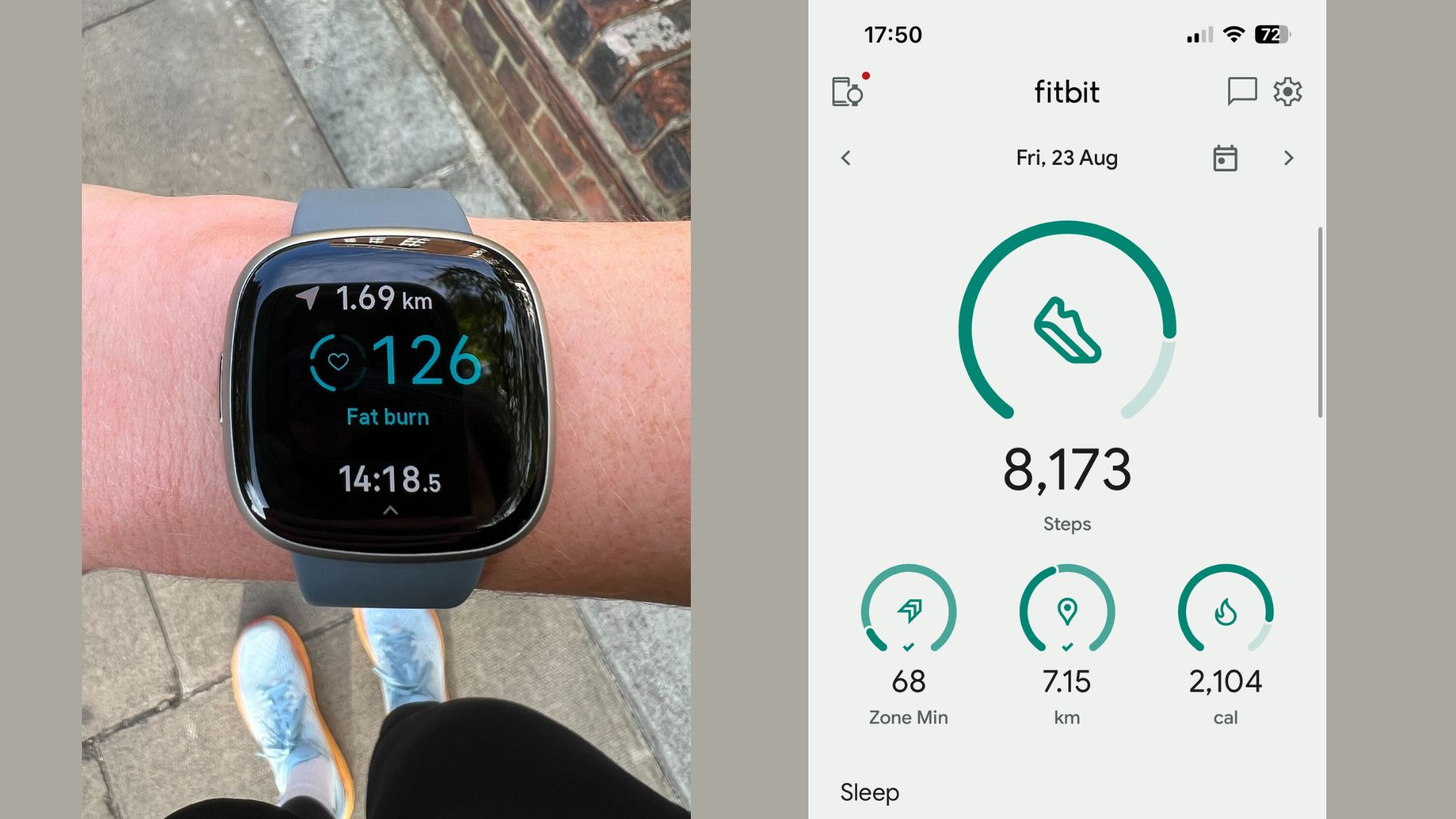
Both the Fitbit Versa 4 (pictured) and Sense 2 display heart rate zones during workouts, the data from which you can view in the Fitbit app (with free or Premium subscription.
It's not hugely important if you're just looking to count your steps or use your tracker for stationary activities like strength training - but if you track other cardio activities like walking as a workout or cycling as a workout, it's pretty essential. In testing out the Sense 2, I didn't have this issue at all - the GPS connected quickly and automatically.
The Fitbit app is another feature of the Fitbit universe that I'd be remiss not to mention - especially since both devices come with a 6-month free trial of Fitbit Premium. The app for both devices is the same and with the Premium access, you can have even more features - such as your sleep profile, Daily Readiness Score, workout videos, and recipe tutorials. It's a great feature included for new buyers and really shows just how good value-for-money Fitbit continues to be. After the 6 months is up, you'll pay £7.99, so be sure to cancel in advance if you don't want to continue using the features.
Display on the Fitbit Sense 2 vs Versa 4
The Fitbit Sense 2 and Versa 4 displays are almost exactly the same - you'll find they both have a high-quality AMOLED, full-colour display at 336 x 336 pixels.
The only difference between the two is the standard pre-set watch face. On the home screen, you'll find the focus remains on core wellness pillars with icons displaying your stress score, heart rate, Active Zone Minutes (how many minutes in terms of intensity you've been exercising for that day) and sleep score, rather than classic fitness statistics like heart rate, steps, and calorie burn like on the Fitbit Versa 4.
However, you can customise your watch face as you like via the app with free and paid-for alternatives that can completely change the look and design of your watch face in just a few clicks and a sync. So, if you're considering one watch over the other based on the watch face design, know it's fully interchangeable.
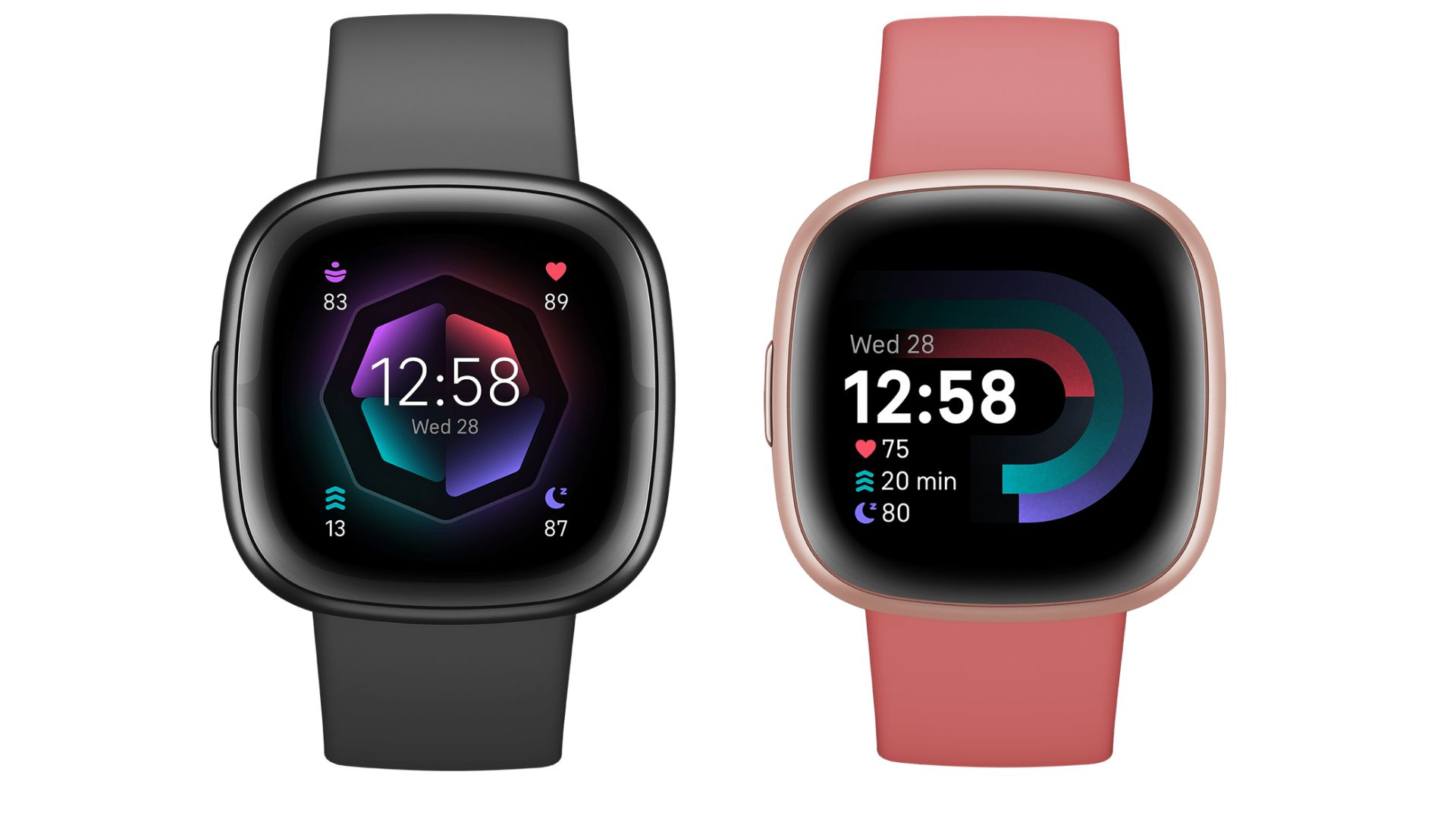
The default watch face on the Fitbit Sense 2 (left) and Versa 4 (right) is one of the major differences between the devices.
Battery life on the Fitbit Sense 2 vs Versa 4
One of the many reasons I love Fitbit devices is the battery life. The only good competitor to this is one of the best Garmin watches or the excellent Coros Pace 3 since the Fitbit by far surpasses Google's own range and Apple devices for battery life. With the Fitbit Versa 4 or Sense 2, you'll get six days of battery life minimum - on battery saving mode, I found mine lasted for longer than this.
The more you use GPS, the faster your battery will fade.
Even when I had enabled the GPS tracking, which tends to drain the battery life quicker, intermittently a few days a week I found that both the Sense 2 and Versa 4 hit the six-day mark and even beyond when I was using the watch without the GPS functionality.
The only time the battery life didn't hold up was when I tried to track my 12-hour bike ride. By the 10th hour, both devices had run out of battery. However, this is a relatively extreme example as most people won't need to track exercise for this long. If you do, consider weighing up Garmin vs Fitbit, as these premium running and cardio-focused fitness trackers hold up for longer.
Fitbit Sense 2 vs Versa 4: Which is better?
Overall, the Fitbit Sense 2 is a better smartwatch. It offers more precise GPS for fitness tracking and looks at health more widely by bringing together advanced sleep insights with stress-tracking features and heart rate monitoring. For an all-singing-all-dancing fitness tracker, it's got to be this one.
However, the Fitbit Versa 4 is also a great option - plus, it's £100 less in some cases. While the Sense 2 is the superior tracker with its streamlined functionality, wellbeing focus, additional features, and smooth navigation, it is £219.99. Though down from the original RRP of almost £300 - a price tag to rival more advanced fitness trackers like the Apple Watch Series 9 and the Oura Ring.
If you have a health condition where extra features - like the additional sensor and ECG - may be useful, it may be worth the money for you. If you prefer a fitness tracker with more streamlined functionality and care about precise GPS then the Sense 2 will naturally be the better option for you too - but it's all personal.
I used the Fitbit Versa 4 without any real problems for two months and I'd happily use it again. However, I found that many of its best features are also contained in the Fitbit Versa 3, which is even cheaper still since the release of the newer model.
You may also be able to pick up one of the best Fitbit deals around and save on your pick of the bunch. During peak shopping times, such as Amazon Prime Day, Black Friday, and Christmas sales, you'll also find that these two models will be reduced.
Or, you might find that Fitbit smartwatches aren't for you at all and you'd be better suited to a fitness tracker like the Fitbit Inspire 3 or Fitbit Luxe.

Grace Walsh is woman&home's Health Channel Editor, working across the areas of fitness, nutrition, sleep, mental health, relationships, and sex. She is also a qualified fitness instructor. In 2025, she will be taking on her third marathon in Brighton, completing her first ultra marathon, and qualifying as a certified personal trainer and nutrition coach.
A digital journalist with over seven years experience as a writer and editor for UK publications, Grace has covered (almost) everything in the world of health and wellbeing with bylines in Cosmopolitan, Red, The i Paper, GoodtoKnow, and more.
-
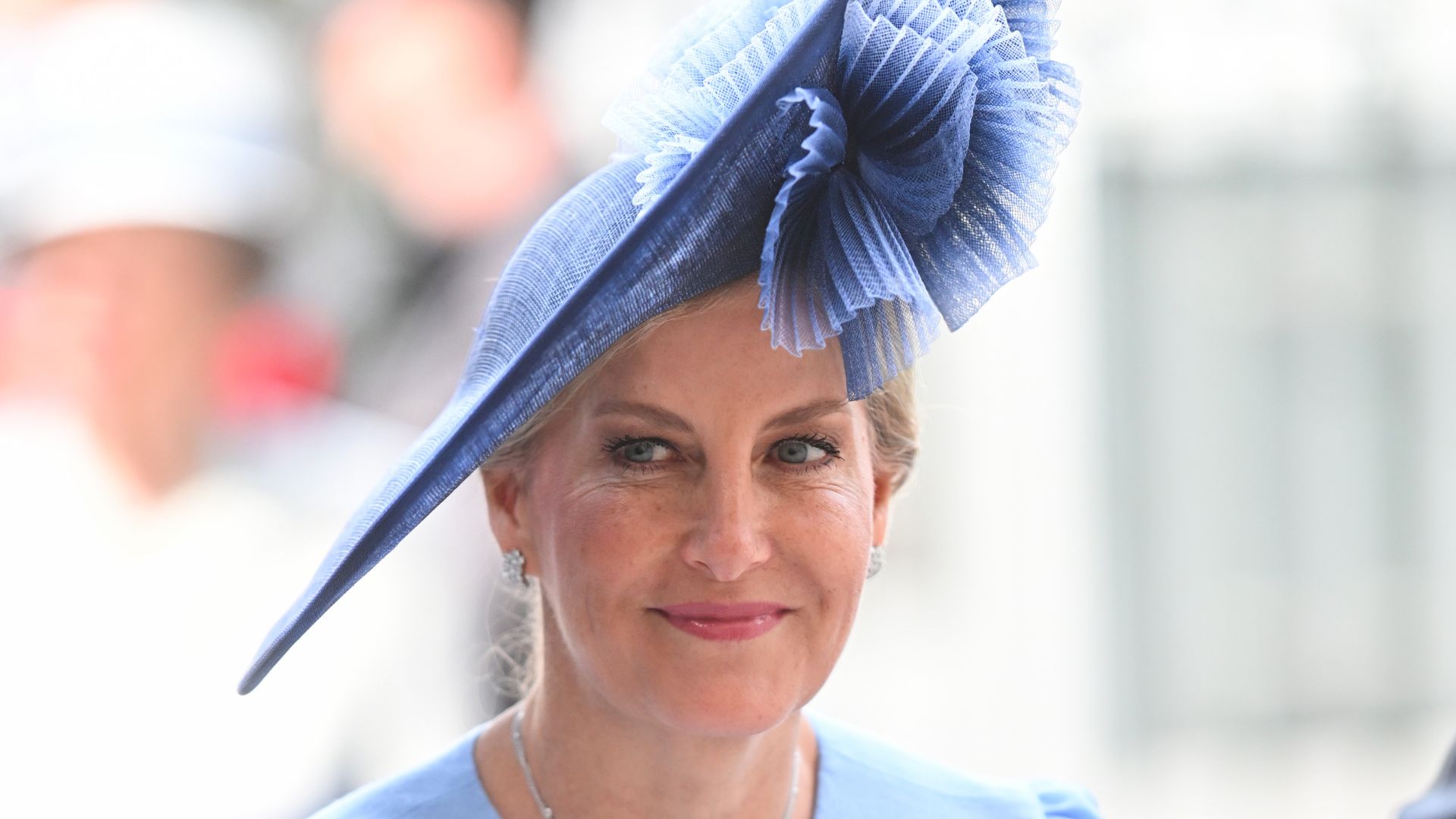 Duchess Sophie makes a case for buying multiples in fourth version of her favourite dress - and Kate Middleton's a fan too
Duchess Sophie makes a case for buying multiples in fourth version of her favourite dress - and Kate Middleton's a fan tooShe marked the 80th anniversary of VE Day at Westminster Abbey
-
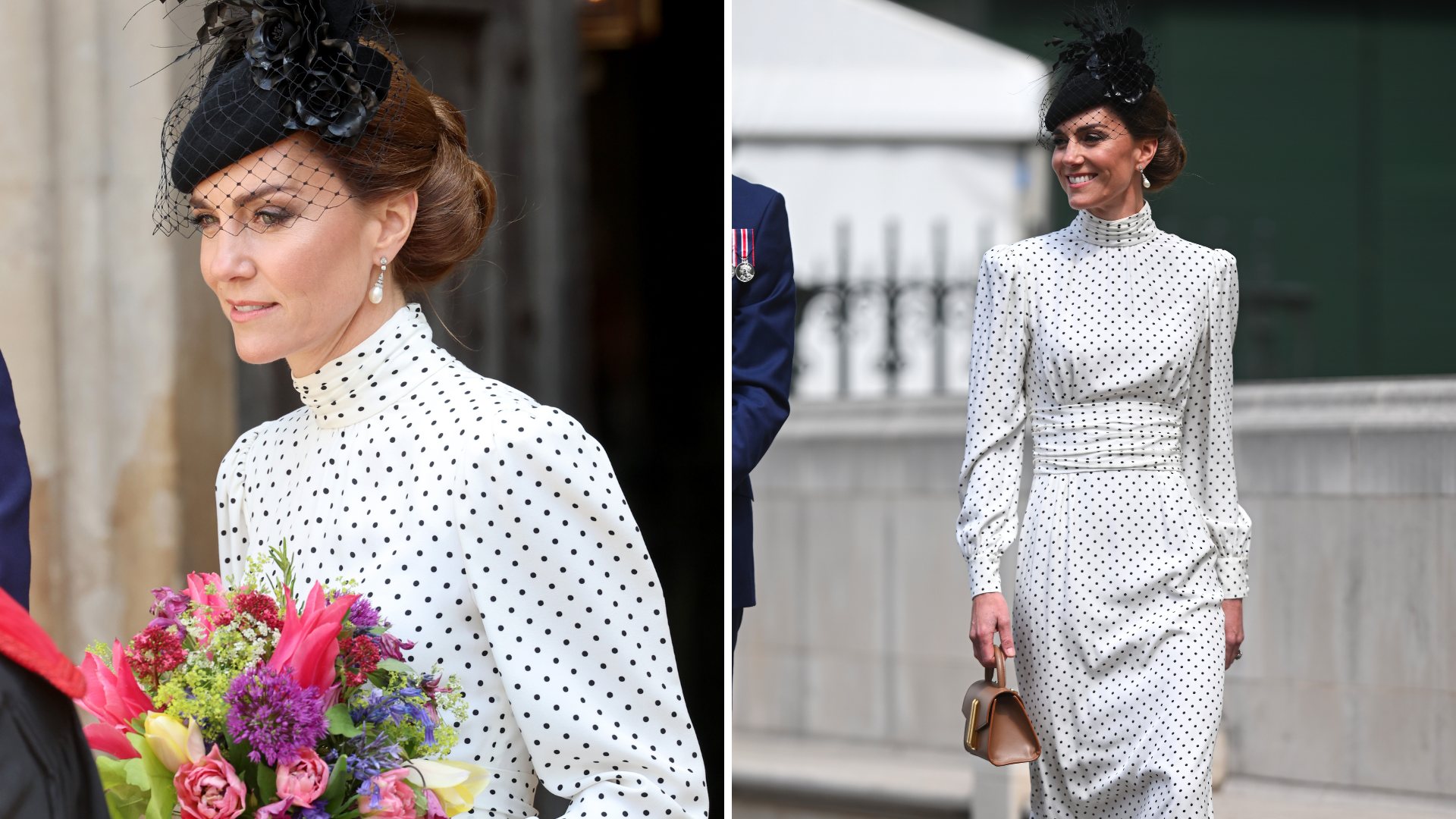 Kate Middleton's VE Day outfit was a head-to-toe rewear featuring chic polka dots and trending toffee details
Kate Middleton's VE Day outfit was a head-to-toe rewear featuring chic polka dots and trending toffee detailsThe Princess of Wales stepped out at Westminster Abbey for VE Day in a recycled polka dot midi
